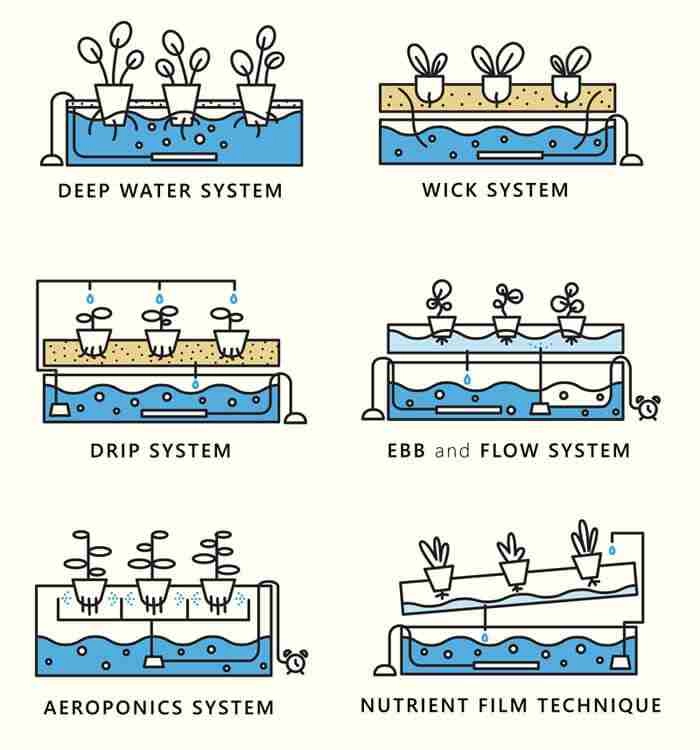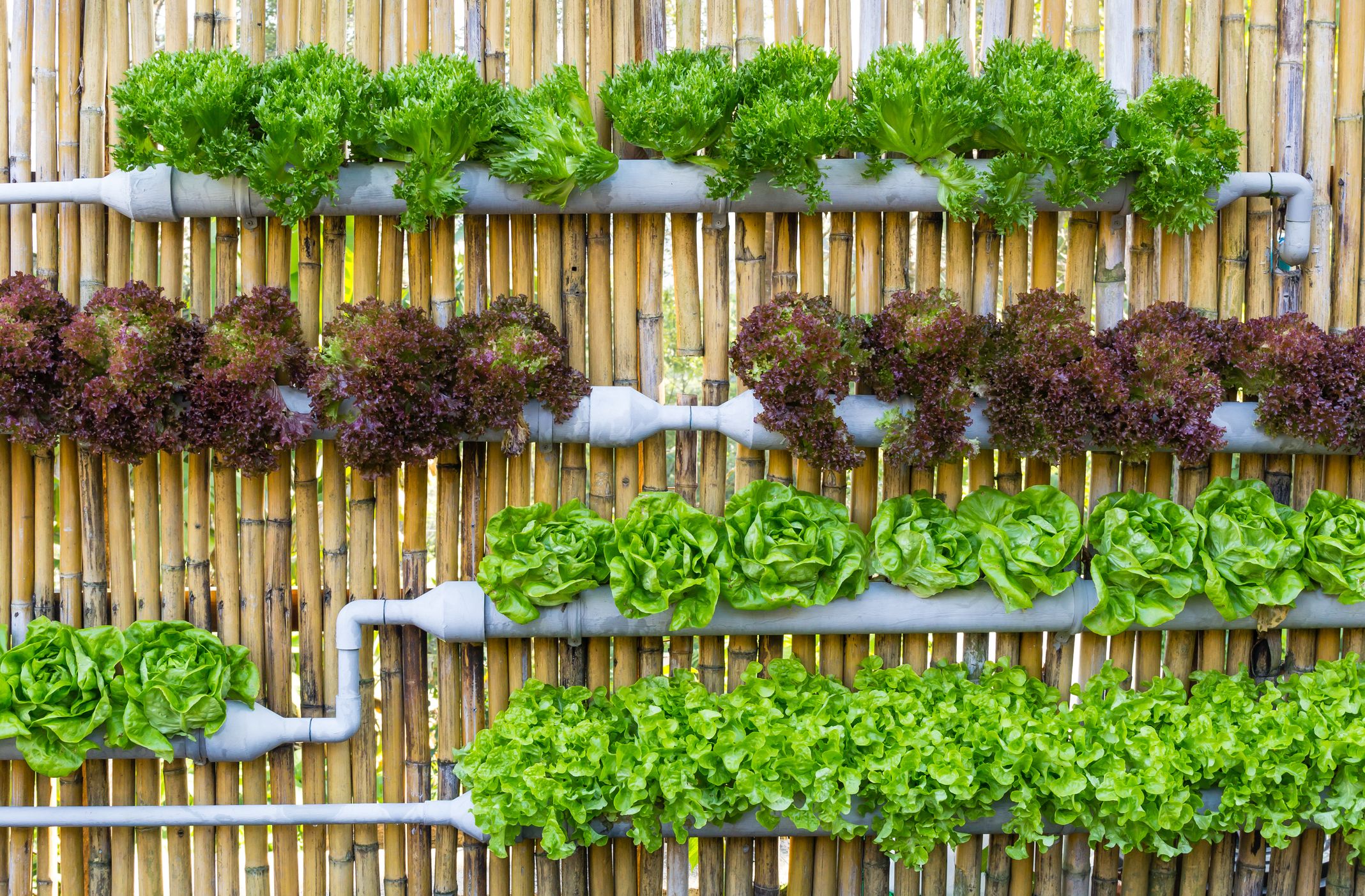
Indoor Hydroponic Systems: Growing Your Own Produce Year-Round
Unlock year-round fresh produce with indoor hydroponic gardening.What is Hydroponics?
Hydroponics is a method of growing plants without soil, instead using nutrient-rich water as the growing medium. Think of it as serving your plants a perfectly balanced smoothie of everything they need to thrive. The basic components of a hydroponic system include a water reservoir, a pump to circulate the water, a growing tray or container, and a method to support the plants[1].
Types of Hydroponic Systems for Indoor Use
There are several types of hydroponic systems, each with its own pros and cons for home use:
- Deep Water Culture (DWC): This is the simplest system, where plants float on a nutrient solution with their roots submerged. It's great for beginners but can be less space-efficient.
- Nutrient Film Technique (NFT): A thin film of nutrient solution flows over the roots in channels. It's more space-efficient but requires careful monitoring of water flow.
- Ebb and Flow: Plants are periodically flooded with nutrient solution, which then drains back into a reservoir. This system is versatile but can be more complex to set up.
- Aeroponics: Roots are suspended in air and misted with nutrient solution. It's highly efficient but can be more technically challenging and expensive[1].
In my experience, DWC systems are the easiest to start with, while NFT systems offer a good balance of efficiency and manageable complexity for home growers.

Benefits of Indoor Hydroponic Gardening
The advantages of hydroponic gardening are numerous:
- Year-round growing: No more waiting for the frost to pass to enjoy fresh tomatoes!
- Water efficiency: Hydroponic systems use up to 90% less water than traditional soil gardening[3].
- Space savings: Vertical systems allow you to grow more in less space - perfect for urban dwellers.
- Reduced pest problems: No soil means fewer soil-borne pests and diseases[1].
- Faster growth rates: Plants grow up to 50% faster in hydroponic systems[5].
Getting Started with Hydroponics
Starting your hydroponic journey doesn't have to be complicated. You'll need:
- A container or growing tray
- A water pump
- An air stone and air pump
- Growing medium (like rockwool or clay pellets)
- Hydroponic nutrients
- pH testing kit
- Seeds or seedlings
For beginners, I recommend starting with leafy greens like lettuce or herbs such as basil and mint. These are forgiving plants that grow quickly, giving you that instant gratification we all crave[1].

Maintaining Your Hydroponic Garden
Maintaining a hydroponic garden is like being a plant DJ - you're in control of the environment. Here are some key aspects:
- Nutrient management: Your plants need a balanced diet. Start with a pre-mixed hydroponic nutrient solution and follow the instructions carefully.
- pH balancing: Most plants prefer a slightly acidic pH between 5.5 and 6.5. Test regularly and adjust as needed.
- Lighting: If you're growing indoors without access to sunlight, you'll need grow lights. LED lights are energy-efficient and don't produce much heat[4].
Advanced Techniques
Once you've mastered the basics, you might want to explore:
- Vertical systems: These can maximize your growing space, turning a blank wall into a lush garden.
- Aquaponics: This combines hydroponics with fish farming, creating a symbiotic ecosystem.
- Smart technology: Automated systems can monitor and adjust conditions, making maintenance a breeze.
Environmental Impact
Hydroponics isn't just good for your kitchen - it's good for the planet too. By growing food at home, you're reducing transportation costs and carbon emissions. Plus, the water efficiency of hydroponic systems makes them a sustainable choice, especially in water-scarce regions[3].
Cost Analysis
While the initial setup cost can be higher than traditional gardening, the long-term savings can be significant. In my experience, my hydroponic lettuce costs about half of what I'd pay at the store, and it's always fresh and pesticide-free.
Personal Experience
When I first started with hydroponics, I made plenty of mistakes. I once forgot to secure my air stone properly and came home to find my entire living room floor flooded! But each mishap taught me something new, and now I can't imagine not having fresh herbs and veggies at my fingertips year-round.
Future of Indoor Hydroponic Gardening
The future of hydroponics is exciting. We're seeing advancements in LED technology, automated nutrient dosing systems, and even AI-controlled environments. As climate change affects traditional agriculture, hydroponics could play a crucial role in food security[2].
Conclusion
Indoor hydroponic systems offer a revolutionary way to grow fresh, nutritious produce year-round, regardless of your location or the size of your living space. They're water-efficient, space-saving, and can yield harvests faster than traditional gardening methods. While there's a learning curve, the rewards of biting into a juicy tomato you've grown yourself in the middle of winter are well worth the effort. So why not give it a try? Your taste buds (and the planet) will thank you!
References
- https://www.forkfarms.com/blog/indoor-garden-systems-what-are-they-and-should-you-buy-one
- https://www.lumi.cn/en/news%26blog-detail/embracing-nature-indoors-the-therapeutic-benefits-of-indoor-hydro-garden-systems
- https://www.verticalfarmdaily.com/article/9638751/what-are-the-main-benefits-of-an-indoor-hydroponic-garden/
- https://extension.umn.edu/how/small-scale-hydroponics
- https://byjus.com/neet/hydroponic-system/
Smart Home Integration for Energy Efficiency: The Future of Sustainable Living






Comments
No comments yet. Be the first to comment!
Leave a Comment